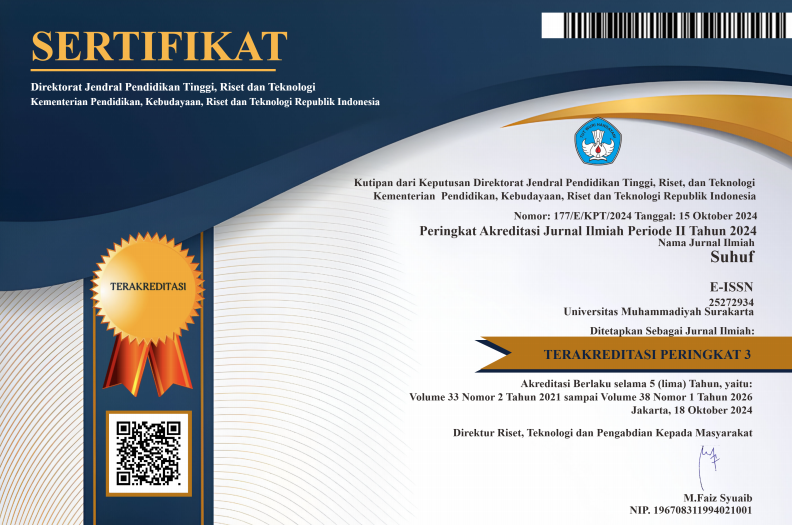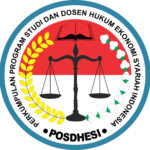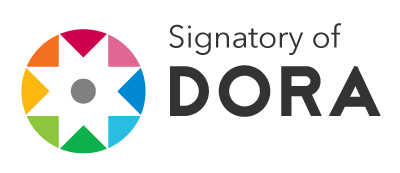Faith and Technology in the Classroom: Measuring the Impact of Digital Tools on Islamic Learning Outcomes
DOI:
https://doi.org/10.23917/suhuf.v37i2.11624Keywords:
Short film-based learning, Islamic education, Project-based learning, Student mastery, Quantitative researchAbstract
This study aims to determine the effect of a short film-based learning model on students’ mastery of Islamic Education material at State Vocational High School 3 Jepara. The research is motivated by the need for innovation in Islamic Education so that learning is not only theoretical but also touches students’ affective and contextual aspects. This quantitative study used a survey method with statistical analyses, including validity, reliability, normality, heteroscedasticity, linearity, and simple linear regression, processed through SPSS 23. The population consisted of 385 grade XI students who had implemented a short film project-based learning model. Using the Slovin formula with a 10% margin of error, 80 students were selected randomly through simple random sampling using Microsoft Excel. Data were collected through questionnaires distributed via Google Forms, supported by documentation and teacher interviews. The results indicated that the short film project-based learning model had a significant effect on learning outcomes, with an R Square value of 0.508. This model encouraged students to master Islamic Education materials more deeply, creatively, and practically through producing Islamic-themed films, making learning more meaningful and relevant to 21st-century challenges.
Downloads
References
[1] S. Alainati, “The Role of Educational Systems in Developing the Twenty-First Century Skills: Perspectives and Initiatives of Gulf Cooperation Council Countries,” IOSR J. Bus. Manag., vol. 26, no. 1, pp. 44–57, Jan. 2024, doi: https://doi.org/10.9790/487X-2601034457.
[2] E. Paputungan and F. Paputungan, “The Role and Function of Affective approaches in learning,” J. Educ. Cult., vol. 3, no. 1 SE-Articles, pp. 57–65, Jan. 2023, doi: https://doi.org/10.47918/jeac.v3i1.1136.
[3] M. L. Potgieter, C. Filmalter, and C. Maree, “Teaching, learning and assessment of the affective domain of undergraduate students: A scoping review,” Nurse Educ. Pract., vol. 86, p. 104417, 2025, doi: https://doi.org/10.1016/j.nepr.2025.104417.
[4] H. Hadi, Muhammad, and A. J. Al Idrus, “Inovasi Kurikulum Pai: Harapan Dan Realita Di Era Digital Pada Sekolah Menengah [Islamic Education Curriculum Innovation: Expectations and Realities in the Digital Era in Secondary Schools],” J. Ilm. Pendidik. Citra Bakti, vol. 12, no. 1 SE-Articles, pp. 217–229, (Indonesia), Feb. 2025, doi: https://doi.org/10.38048/jipcb.v12i1.4933.
[5] E. N. Mistiawati, N. L. Inayati, M. I. Valarthodi, and I. Irshad, “Teacher Competency in Applying Assessment for Islamic Education Learning in the Digitalisation,” Suhuf, vol. 37, no. 1, pp. 151–160, May 2025, doi: https://www.doi.org/10.23917/suhuf.v37i1.8644.
[6] Partono and M. Z. Syarofi, “Meningkatkan Mutu Pendidikan Agama Islam melalui Implementasi Behaviour Modification Approach [Meningkatkan Mutu Pendidikan Agama Islam melalui Implementasi Behaviour Modification Approach],” Tapis J. Penelit. Ilm., vol. 7, no. 1, pp. 87–97, (Indonesia), 2023, doi: http://dx.doi.org/10.32332/tapis.v7i1.5392.
[7] R. D. P. Johar, A. Satrial, S. Yulia, and K. M. Alouzi, “Contextualizing Fiqh al-Munakahat through Short Filmmaking: A Legal Constructivist Approach,” Int. J. Islam. Stud. High. Educ., vol. 4, no. 2 SE-Articles, pp. 125–138, Jul. 2025, doi: https://doi.org/10.24036/insight.v4i2.228.
[8] Ardani and Prospery Mwansa Mwila, “Islamic Education through the Digital Storytelling Method in Islamic Date Learning: (Classical Narrative Revitalization Study for the Millennial Generation),” Permata J. Pendidik. Agama Islam, vol. 6, no. 1 SE-Articles, pp. 64 – 72, Jun. 2025, doi: https://doi.org/10.47453/permata.v6i2.3275.
[9] E. Wahyuni, “Implementasi Model Pembelajaran Project Based Learning ( Pjbl ) Dalam Meningkatkan Hasil Belajar Peserta Didik Pada Mata Pelajaran Pendidikan Agama Islam Smp Negeri 7 Kota Tangerang [Implementing the Project-Based Learning (PjBL) Model to Enhance Student ,” J. Kaji. Islam dan Pendidik. Tadarus Tarbawy, vol. 3, no. 1, pp. 320–327, (Indonesia), 2021, doi: http://dx.doi.org/10.31000/jkip.v3i1.4262.
[10] N. W. AL, R. T. Mangesa, A. Arfandi, S. Supriadi, and A. M. Mappalotteng, “Efektivitas Penerapan Model Project Based Learning Terhadap Motivasi dan Kemampuan Pemahaman Konsep Siswa Sekolah Menengah Kejuruan [Effectiveness of Project-Based Learning in Enhancing Motivation and Conceptual Understanding among Vocational High School ,” UNM J. Technol. Vocat., vol. 7, no. 1, pp. 45–57, (Indonesia), 2023, doi: https://doi.org/10.26858/ujtv.v7i1.38183.
[11] Samsiadi and Romelah, “Model Project Based Leaning ( PjBL ) Dalam Pembelajaran Pai Di Smk Negeri 1 Berau Kaltim [The Project-Based Learning (PjBL) Model for Islamic Education at SMK Negeri 1 Berau, East Kalimantan],” Res. Dev. J. Educ., vol. 8, no. 1, pp. 363–371, (Indonesia), 2022, doi: http://dx.doi.org/10.30998/rdje.v8i1.12993.
[12] J. Taliak, T. Al Farisi, R. A. Sinta, A. Aziz, and N. L. Fauziyah, “Evaluasi efektivitas metode pembelajaran berbasis proyek dalam mengembangkan kreativitas siswa [Assessing the Effectiveness of Project-Based Learning in Enhancing Student Creativity],” J. Educ. Res., vol. 5, no. 1, pp. 583–589, 2024, doi: https://doi.org/10.37985/JER.V5I1.876.
[13] Y. B. Mokalu, M. Paat, I. J. Polii, J. S. Akbar, and M. A. Kuron, “Pengembangan model project-based learning berbasis pembuatan film untuk meningkatkan literasi mahasiswa pada mata kuliah Bahasa Indonesia Keilmuan [Developing a Film-Based Project Learning Model to Enhance Student Literacy in the Scientific Indonesian Lan,” SOSCIED, vol. 7, no. 2, pp. 760–769, (Indonesia), 2024, doi: https://doi.org/10.32531/JSOSCIED.V7I2.879.
[14] M. Arif and R. Romelah, “Implementasi Pembelajaran Pai Melalui Media Film Kisah Nabi Di Smpit Niq Bunguran Timur-Natuna[Implementing Islamic Education Learning through Prophet Story Films at SMPIT NIQ Bunguran Timur, Natuna],” Res. Dev. J. Educ., vol. 9, no. 1, pp. 56–60, (Indonesia), 2023, doi: https://doi.org/10.30998/rdje.v9i1.13876.
[15] I. Santoso, H. Madiistriyatno, and A. Rachmatullah, Metodologi Penelitian Kuantitatif. Indigo Media, 2021. [Online]. Available: https://books.google.co.id/books?id=bRFTEAAAQBAJ
[16] I. Fauzi, “STATISTIK PENELITIAN PENDIDIKAN Panduan Praktis Analisis Data Statistik Melalui Aplikasi SPSS-26,” BADAN PENERBIT STIEPARI Press, 2023.
[17] Syuhud and A. Farid, “Aktualisasi Teori Belajar Kognitif Dalam Pendidikan Agama Islam Pada Kurikulum Merdeka: Tinjauan Konseptual Dan Implikatif [Actualizing Cognitive Learning Theory in Islamic Education under the Independent Curriculum: A Conceptual and Implicative Analysis],” AL-ADABIYAH J. Pendidik. Agama Islam, vol. 5, no. 2 SE-Articles, pp. 112–125, Aug. 2024, doi: https://doi.org/10.35719/adabiyah.v5i2.923.
[18] B. Bustomi, I. Sukardi, and M. Astuti, “Pemikiran konstruktivisme dalam teori pendidikan kognitif jean piaget dan lev vygotsky [Constructivist Perspectives in the Cognitive Educational Theories of Jean Piaget and Lev Vygotsky.],” J. Rev. Pendidik. Dan Pengajaran, vol. 7, no. 4, pp. 16376–16383, (Indonesia), 2024, [Online]. Available: https://share.google/yFrF5yXFpD2cu6jvR
[19] B. Tohari and A. Rahman, “Konstruktivisme Lev Semonovich Vygotsky dan Jerome Bruner: Model pembelajaran aktif dalam pengembangan kemampuan kognitif anak [Lev Semyonovich Vygotsky’s and Jerome Bruner’s Constructivism: An Active Learning Model for Developing Children’s Cognitive Abi,” Nusant. J. Pendidik. Indones., vol. 4, no. 1, pp. 209–228, 2024, doi: https://doi.org/10.14421/njpi.2024.v4i1-13.
[20] S. Etnawati, “Implementasi Teori Vygotsky Terhadap Perkembangan Bahasa Anak Usia Dini [The Application of Vygotsky’s Theory to Early Childhood Language Development],” J. Pendidik., vol. 22, no. 2, pp. 130–138, (Indonesia), 2021, doi: https://doi.org/10.52850/jpn.v22i2.3824.
[21] L. N. Khasanah, M. N. R. Maksum, and N. N. B. Zahid, “The Implementation of Project-Based Learning to Enhance Collaborative Skills in Senior High School,” Suhuf, vol. 37, no. 1, pp. 113–122, May 2025, doi: https://www.doi.org/10.23917/suhuf.v37i1.10189.
[22] L. K. Sari, Z. Hartati, Y. Khalfiah, and Y. Halid, “Effective Pedagogical Approaches in Fostering Student Responsibility: A Qualitative Study at an Islamic Boarding School in Indonesia,” Suhuf Int. J. Islam. Stud., vol. 37, no. 1 SE-Articles, pp. 161–170, May 2025, doi: https://doi.org/10.23917/suhuf.v37i1.10123.
[23] S. N. Sa’diah, “The Role Of Islamic Religious Education Teachers In Increasing Students’interest In Learning At Ibtidaiyah Al Hikmah Argomulyo,” UNISAN J., vol. 3, no. 7, pp. 822–831, 2024, [Online]. Available: https://journal.an-nur.ac.id/index.php/unisanjournal/article/view/2884
[24] I. Hamzah, “Aplikasi Self-Determinantion Theory pada Kebijakan Publik Era Industri 4.0 [Applying Self-Determination Theory to Public Policy in the Industry 4.0 Era],” Psisula Pros. Berk. Psikol., vol. 1, pp. 66–71, (Indonesia), Jan. 2020, doi: https://doi.org/10.30659/psisula.v1i0.7691.
[25] S. Suprihatien, A. S. Utami, V. N. Ardani, E. Meta Y, and S. Burdam, “Penggunaan Cerita Bergambar Sebagai Alat Bantu dalam Pembelajaran Kosakata Bahasa Indonesia Kelas Rendah Sekolah Dasar [The Use of Picture Stories as a Teaching Aid for Vocabulary Learning in Lower Elementary Indonesian Language Classes],” J. Basicedu, vol. 8, no. 6 SE-Articles, pp. 4654–4661, (Indonesia), Dec. 2024, doi: https://doi.org/10.31004/basicedu.v8i6.9109.
[26] N. N. Suantini, N. K. Suarni, and I. G. Margunayasa, “Penggunaan Cerita Bergambar Sebagai Alat Bantu dalam Pembelajaran Kosakata Bahasa Indonesia Kelas Rendah Sekolah Dasar,” J. Ilm. Profesi Pendidik., vol. 9, no. 1 SE-Articles, pp. 716–727, (Indonesia), Feb. 2024, doi: https://doi.org/10.29303/jipp.v9i1.1950.
[27] V. Koutroubas and M. Galanakis, “Bandura’s Social Learning Theory and Its Importance in the Organizational Psychology Context,” J. Psychol. Res., vol. 12, no. 6, pp. 315–322, 2022, doi: https://doi.org/10.17265/2159-5542/2022.06.001.
[28] S. Manik, M. Sembiring, I. Padang, and L. Manurung, “Theory of Bandura’s Social Learning in The Process Of Teaching at SMA Methodist Berastagi Kabupaten Karo,” J. Visi Pengabdi. Kpd. Masy., vol. 3, no. 2 SE-, pp. 85–96, Aug. 2022, doi: https://doi.org/10.51622/pengabdian.v3i2.729.
[29] S. A. Aminah and N. A. D. Setyowati, “The Influence of the Project Based Learning Model using Video on the Creativity Thinking Ability and IPAS Learning Outcomes for Elementary School Students,” JP (Jurnal Pendidikan) Teor. dan Prakt., vol. 9, no. 1, pp. 67–75, 2024, doi: https://doi.org/10.26740/jp.v9n1.p67-75.
[30] W. Rahmi, “Analytical Study of Experiential Learning: Experiential Learning Theory in Learning Activities,” EDUKASIA J. Pendidik. dan Pembelajaran, vol. 5, no. 2 SE-Articles, pp. 115–126, 2024, doi: https://doi.org/10.62775/edukasia.v5i2.1113.
[31] D. Kolb, Experiential Learning: Experience As The Source Of Learning And Development, vol. 1. New Jersey: Prentice Hall, 1984. [Online]. Available: https://www.researchgate.net/publication/235701029_Experiential_Learning_Experience_As_The_Source_Of_Learning_And_Development
Downloads
Submitted
Accepted
Published
How to Cite
Issue
Section
License
Copyright (c) 2025 Melysa Melysa, Riza Zahriyal Falah

This work is licensed under a Creative Commons Attribution 4.0 International License.


















